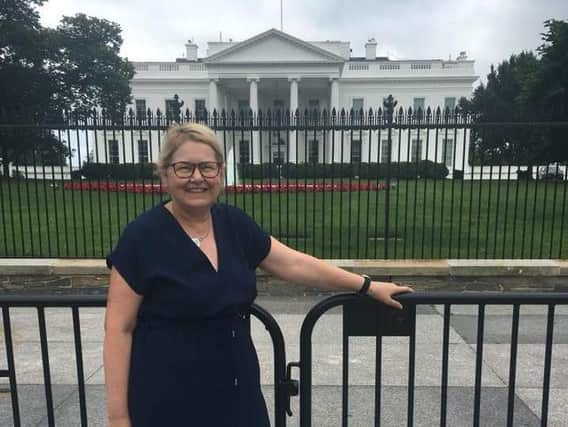Wester Hailes at 50: I raised my sons in Wester Hailes during 'Trainspotting Years' and loved it


The old buffer shook my hand. “Where do you live, dear?”
“Wester Hailes,” I replied smiling. I expected a reaction, but not quite what came next.
“Wester Hailes!” he boomed for the whole room to hear. We were in the Signet Library, the heart of Edinburgh’s establishment, and I was a naïve young councillor, sent along to deputise for the Lord Provost at a posh dinner.
Advertisement
Hide AdAdvertisement
Hide Ad“Wester Hailes,” he repeated, just in case his gin-quaffing, bow-tied, permed-hair guests had not heard the first time.
“We’re practically neighbours,” he laughed. “I’m in Colinton. Have to say you’re blooming brave, living in Wester Hailes.” And he shook his head as he walked away to greet an arriving guest.
His reaction to my post code, EH14 3ES if my memory serves me correctly, was not unusual, though it was the first time I had been called brave. A schemie, often. But never brave.
I lived in Wester Hailes from 1983 to 1997, its Trainspotting years according to some. I brought up my two sons there, found my dream job as editor of the Wester Hailes Sentinel, became a very active member of the local Labour Party, and made some lifelong friends. I was even one of the city councillors for the area for four years.
Advertisement
Hide AdAdvertisement
Hide AdI loved the place – or to be more accurate, I loved my friends and neighbours.
The built environment was less appealing. The planners had designated two car park spaces for every flat, based on a theory that each household consisted of two adults in full-time work. But there were no pavements, only dingy under-passes.
Nor had they envisaged the Thatcher years. Unemployment became the norm, single-parent households, as ours was, replaced the nuclear family, and cheap heroin from, of all places, Afghanistan, flooded the local market. Young men and women, who ten years previously would have been apprentice printers, hairdressers and joiners, became junkies.
Then, in the mid-1980s, the first HIV diagnosis among Edinburgh’s drug users was made, and Wester Hailes, along with our sister estates of Craigmillar and Pilton, were quickly caricatured as a living hell.
Advertisement
Hide AdAdvertisement
Hide AdThe reality was, of course, completely different. My eldest son recalls sunny days spent playing golf in the home made course that ran across the green space from stair 9 to stair 22.
“It had five holes,” he remembers. “But no-one ever got a hole-in-one. It was a great place as a kid, we all played together, and there was plenty of open space to run around.
“Mind you, I didn’t like the fence between us and Kingsknowe Golf Course,” he adds. “The Wester Hailes section was the only one to have barbed wire, it was typical of how people viewed us, we were excluded.”
As residents, we fought back against the urban myth that branded 10,000 people as wasters, or worse.
Advertisement
Hide AdAdvertisement
Hide AdWe campaigned to replace the damp-ridden, poorly-built tower blocks with modern tenements.
We organised our own facilities, from a social club and an over-50s centre to adventure playgrounds and fun runs. Thanks to Willie Dunn, one of my council colleagues, Wester Hailes was the first housing estate in the UK to have its own cyber-café.
We persuaded the council to build a library and council offices in the heart of the estate, and in 1997, our community dream came true when the ABC cinema opened its doors, a few hundred yards away from a new rail halt. Wester Hailes was no longer on the edge of the city, but connected to its centre.
Today, I hope Wester Hailes is seen as what it always was, a neighbourhood on the west of the city where people do the best they can for their families and are proud of their community. Just like the good people of Colinton.
